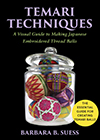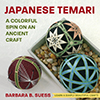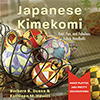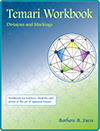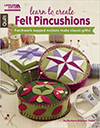The story behind "kiku herringbone stitching"
The stories behind many temari terms are often fascinating - they evoke a feeling with symbolism and a picture in your mind of the finished stitch. Uwagake chidori kagari is one of these terms. For a full glossary that includes English, romanji, and kanji temari terms, download a free copy.
Kagari means stitch - easy enough!
Chidori means herringbone. Well, actually chidori means plover. You know the little bird that runs along the beach? This little guy often runs in short bursts and stops. The movements of the chidori call to mind a zigzag path just like the herringbone calls to mind the same path.
Uwagake - this word tells us that the upper part of the stitch is different, a variation on the regular herringone. Here the "upper part" is the stitch made closer to the pole in this drawing. You make the stitch under and around previously stitched rows.
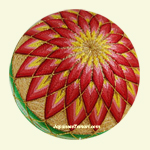
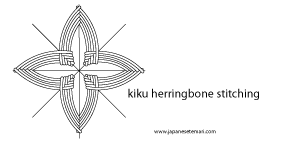
We chose "kiku" for the English version of this term because the stitch often represents the kiku (chrysanthemum flower). You can stitch kiku flowers in other ways, of course, but this is the most common. Keeping this Japanese word in the term gives a nod of recognition and respect to Japanese culture and the origin of the stitch. Also "kee koo" is fun to say! Got to get a smile in there. The kiku represents longevity - the petals fall very slowly - and the 16 petal kiku is the symbol representing the royal family in Japan.
We chose "herringbone" over"zigzag." There are certainly many, many variations of herringbone stitching. This is just one of them. It appears to be unique to temari, as well. Also Sensei Ozaki, the head of the JTA, used the word herringbone while teaching so we know she approves.
My first contact with JTA was with Sensei Ozaki. She gave me my Level 1 and Level 2 certifications. Later, our group was struggling with the term uwagake chidori kagari. Unpronounceable and unfathomable to many, we felt we needed an English version that represented the stitch technique and also Japanese culture. I was personally under the gun to get this figured out because my book Japanese Temari was almost ready to go to print! Polling my friends gave the thumbs-up to "kiku herringbone stitching" as the perfect name. To make certain this was acceptable to JTA, I wrote a letter to Sensei Ozaki and had a translator type it up in Japanese for me. I explained the dilemma about the term. She wrote back the nicest letter! I could not have imagined such kindness in the response. She said she thought kiku herringbone stitching is a fine English name for this term. And she pointed out that throughout Japan, temari makers have different names for this stitch. It does not matter so long as we can communicate. Good answer!
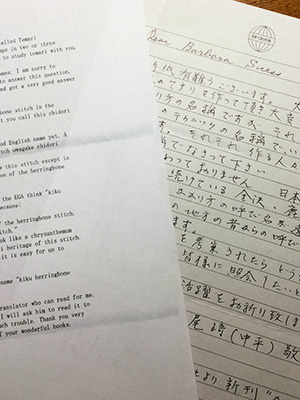
I hope you've enjoyed reading about the evolution of the name kiku herringbone stitching! There are several other variations of herringbone stitching used in temari - here is just one...
Descending herringbone stitching (shitagake chidori kagari) - Stitch rows of herringbone stitches close together but not overlapping. Make your stitches small to form points. This design is not easy to do. It looks better when stitched with the thread doubled. On the inside points, place the stitch as close as you can up against (almost under) the previous row.
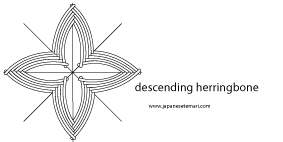
For more about the language of temari, please visit this page
